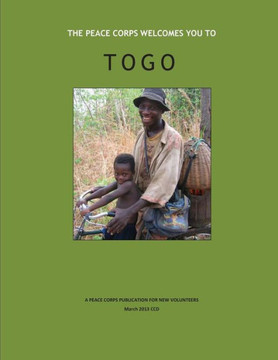
Createspace Independent Publishing Platform
The Peace Corps Welcomes You To: The Philippines
Product Code:
9781530974689
ISBN13:
9781530974689
Condition:
New
$13.38

The Peace Corps Welcomes You To: The Philippines
$13.38
The first people known to inhabit the Philippines were called "Negritos" by the Spanish, presumably because they were small and dark skinned. They are believed to have crossed over land bridges from Asia 30,000 years ago, bringing with them knowledge of rice cultivation techniques that are still in practice. Later the Negritos were joined in the Philippine archipelago by successive waves of Malay and Polynesian settlers who arrived in boats and formed small communities of their boat mates throughout the islands. By the time the Spanish invasions began in the early 16th century, Chinese, Arab, and other immigrants had also arrived in the Philippines and contributed their bloodlines and cultures to the Asian-Pacific mosaic that characterizes Philippine society today. Immigration from other Asian countries continued during the 19th and 20th centuries, and the Philippines is currently experiencing notable influxes of Korean and Japanese people seeking sunny weather and business opportunities. Ferdinand Magellan's attempt to circumnavigate the world ended in April 1521 in a battle near a small island off Cebu. This first European incursion into the Philippines established a Spanish claim to the archipelago, which eventually led to more than three centuries of Spanish rule. Most Filipinos converted to Roman Catholicism and other Christian denominations during Spanish and American rule. Ardent Christianity is a principal and pervasive feature of Philippine national life, and even members of the Muslim minority often are educated in Christian schools and colleges. Independence from Spain was declared by Filipino nationalists on June 12, 1898. However, the United States simultaneously occupied Manila during the Spanish-American War, and almost a half century of American colonial administration began. Japan conquered the islands during World War II and then lost them to a joint American and Filipino invasion force that re-established American rule. The period after World War II saw U.S.-assisted reconstruction and independence on July 4, 1946. From the mid-1960s to the mid-'80s, President Ferdinand Marcos dominated Philippine politics. This period included martial law and suspension of democratic institutions. The first "People Power" revolt toppled Marcos' regime in 1986. Corazon Aquino, the widow of Marcos' principal opponent, became president, and democratic institutions began functioning again. Fast forward to 2010: Following several administrations reflecting the political dynasties of the Philippines, the current president is Benigno "Pinoy" Aquino Jr., son of former President Aquino and assassinated political dissident, Benigno Aquino. During his six-year term (which ends in 2016), many expect great improvement in governance.
| Author: Peace Peace Corps, Penny Hill Press |
| Publisher: CreateSpace Independent Publishing Platform |
| Publication Date: Apr 10, 2016 |
| Number of Pages: 50 pages |
| Language: English |
| Binding: Paperback |
| ISBN-10: 1530974682 |
| ISBN-13: 9781530974689 |





